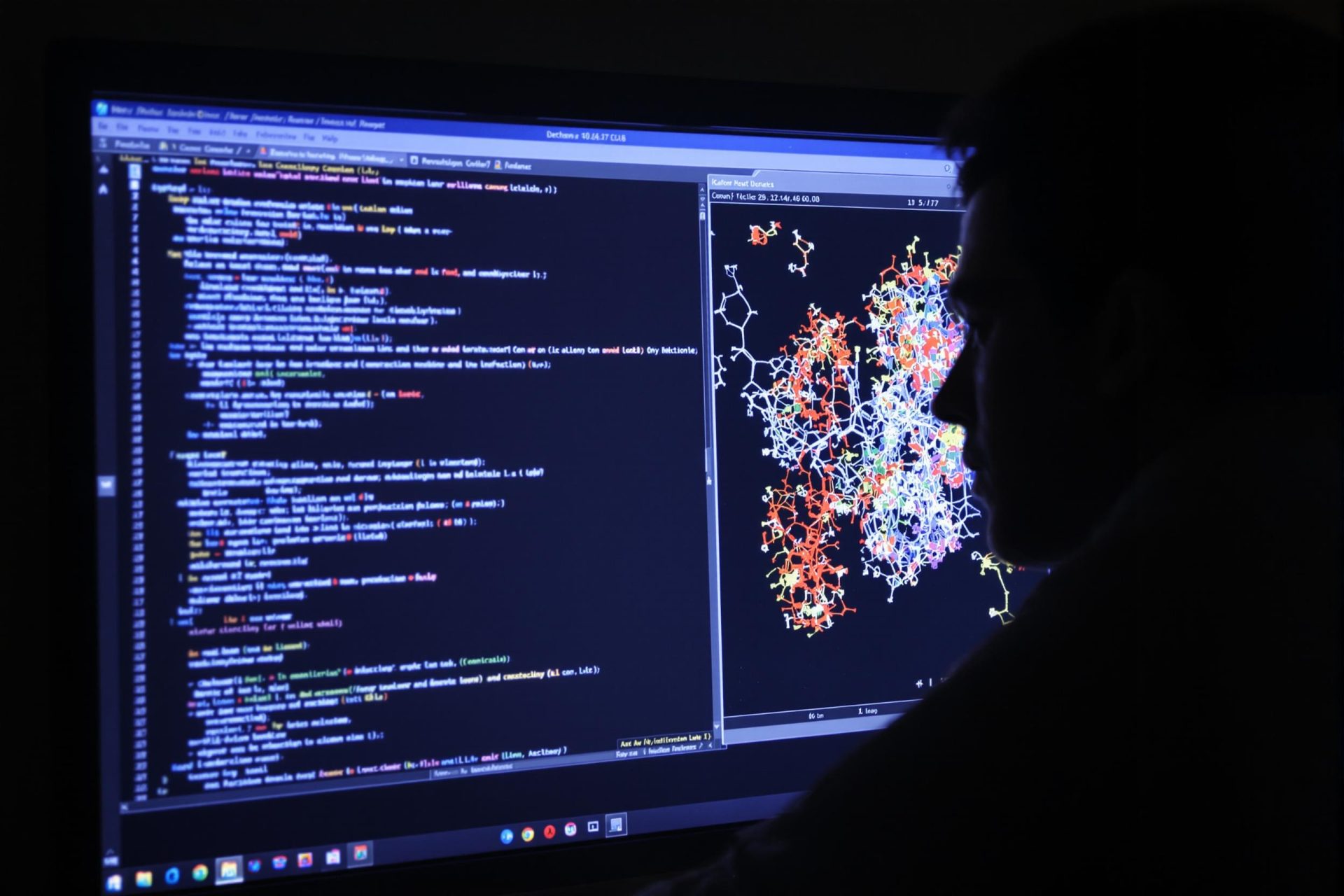Key Takeaways
- Scientists are developing new AI tools that can design biological molecules like proteins using simple English commands.
- This “text-to-biology” approach could make complex biological design accessible to more researchers.
- Early models have successfully created functional, novel proteins from text prompts, showing significant potential.
- While promising, these AI systems are still in early development, facing challenges in refining instructions and output quality.
Imagine trying to create a new functional part for a living cell using artificial intelligence. One recent attempt using basic AI tools resulted in a theoretical protein so jumbled it likely wouldn’t work in a real lab setting, according to advanced prediction software.
But there’s exciting news for researchers. A new generation of AI tools is making this process much more intuitive. These advanced systems can understand instructions written in plain language, using them to design proteins and other molecules, including potential new drugs. Scientists might even be able to “talk” to cells in ordinary English to uncover their inner workings.
This development is a significant step in the ongoing bio-AI revolution, which is already transforming areas like protein design and understanding biological structures. Traditionally, using these powerful AI tools required considerable technical expertise.
However, new models that comprehend plain text could dramatically lower the entry barrier, allowing more scientists to participate in this cutting-edge research. This could also lead to greater control over the designed molecules and other biological outputs.
“It would be useful to be able to specify precisely what we want, and have a protein be designed with those features,” says Mohammed AlQuraishi, a computational biologist at Columbia University in New York City.
Last month, a team led by Fajie Yuan, a machine-learning scientist at Westlake University in Hangzhou, China, showcased a text-to-protein model they developed called Pinal. According to Nature, this AI designed functional proteins, including lab-tested enzymes and fluorescent proteins, that were original in their designs and not just copies of existing molecules. “We are the first to design a functional enzyme using only text,” Yuan said. “It’s just like science fiction.”
Pinal was trained by exposing it to text descriptions detailing the structures, functions, and other characteristics of 1.7 billion proteins. After some extra fine-tuning, the model could take a simple prompt and generate hundreds of potential protein sequence designs.
For example, one prompt given to Pinal was: “Please design a protein that is an alcohol dehydrogenase,” referring to an enzyme that metabolizes alcohol. Yuan and his colleagues then used other computational tools to pick the most promising designs for lab testing.
Remarkably, two of the eight AI-designed alcohol dehydrogenase proteins successfully catalyzed the breakdown of alcohol, although they were less efficient than natural enzymes. Yuan’s team has also reported designing functional green fluorescent proteins and plastic-degrading enzymes, all significantly different in sequence from their natural counterparts.
Despite these breakthroughs, it’s still early days for these biological AI models. “I see it as a high-risk, high-reward area,” commented Anthony Gitter, a computational biologist at the University of Wisconsin–Madison.
Several other groups are developing similar AI models. One, named ESM-3, can be prompted with keywords as well as protein sequences. A startup called 310.ai has created a proprietary tool, MP4, which has designed numerous proteins from text inputs, including some that can bind to ATP, the cell’s primary energy source. Timothy Riley, the company’s vice-president of discovery, mentioned they are using the model to design proteins that mimic GLP-1 drugs, the widely used obesity treatments.
One challenge is crafting effective text instructions for the AI, says 310.ai co-founder Kathy Wei. She likens it to the early days of image-generating AIs like Dall-E, where users had to learn which prompts yielded the best results. Just as those early image AIs often struggled with details like human hands, these protein-design AIs can sometimes produce less-than-perfect outputs, such as proteins with overly repetitive sequences.



